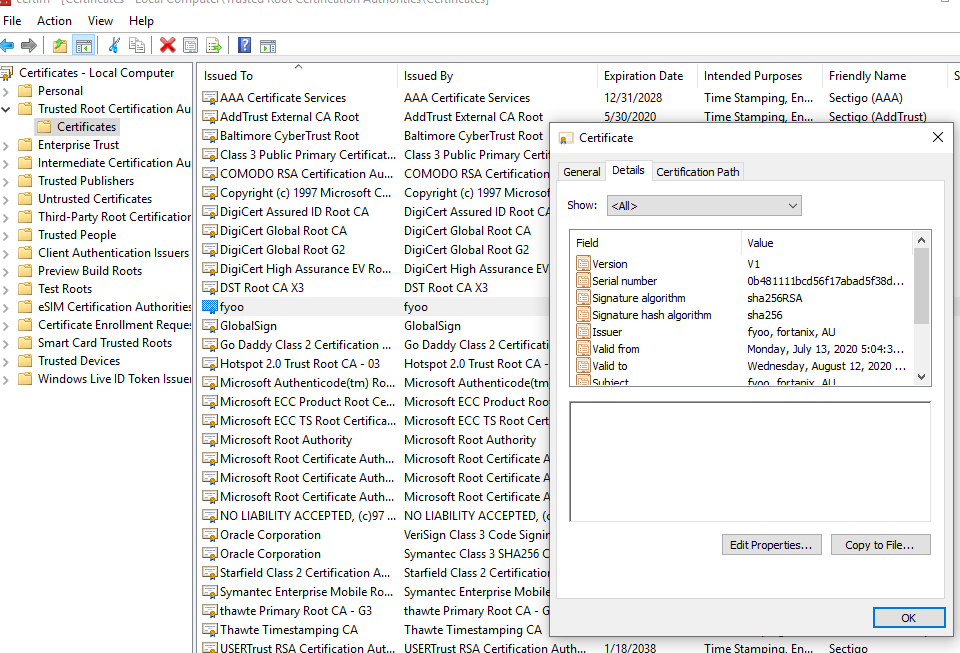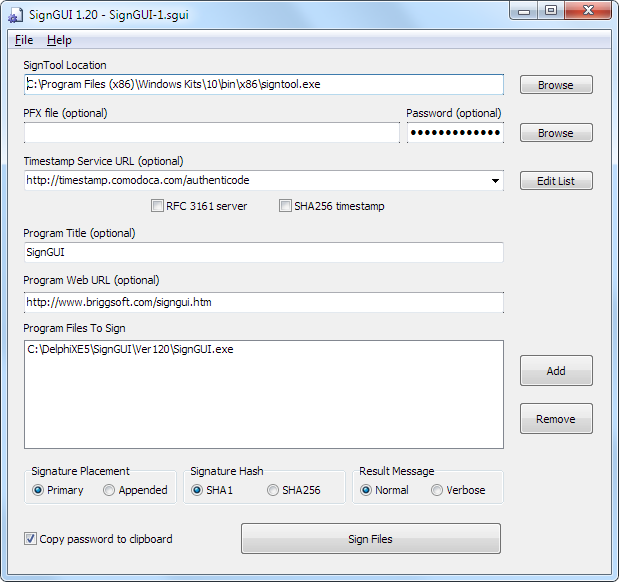

If you did not use the timestamping feature, we highly recommend you read our article on the importance of timestamping any code to ensure your signature remains valid after certificate expiration. If the certificate is installed in the local certificate store, click Select from Store, and then navigate to the certificate.

Enter the password for the keystore when prompted, and click OK.
 By default this is: :Program Files (x86)Windows Kitsbinx86.
By default this is: :Program Files (x86)Windows Kitsbinx86. Open a command line window and change directory to the location of SignTool on your machine. We highly recommend you verify your signature by running the command: signtool verify /pa /v “path to the exe file you signed”. Connect the token with your EV Code signing certificate to the USB port of your computer.
For Comodo certificates, run this command:Ĭongratulations! Your. SignTool sign /f "path to your PFX file" /p "your PFX file password" /tr /td "path to the exe file you want to sign" For Symantec & Thawte certificates, run this command: Currently Microsofts Signtool is the most effective way of accomplishing that, though our signing tool kSign will have dual signing support VERY soon. Run cmd.exe 3. Use the appropriate command below If you’re running version Windows SDK 6.0 or lower, reference our Microsoft Authenticode Installation Instructions to utilize the GUI interface. After you received the trusted certificate and saved the PFX (.p12) file, follow the instructions below to guide you through the signing process on a Windows Vista machine running version Windows SDK 7.0 or higher. A Code Signing Certificate can be used to digitally sign code or content developed by Window Programs. Before you can use Netscape Signing Tool to sign files, you must have an object-signing certificate, which is a special certificate whose associated private key.




 By default this is:
By default this is: 

 0 kommentar(er)
0 kommentar(er)
